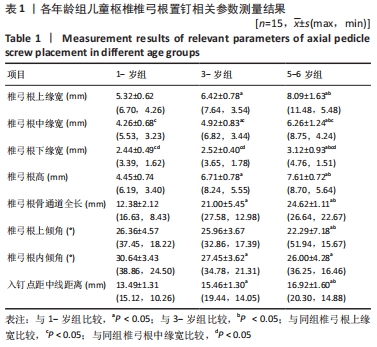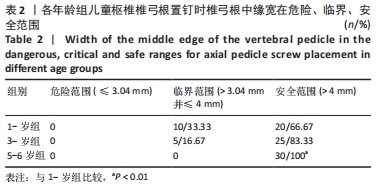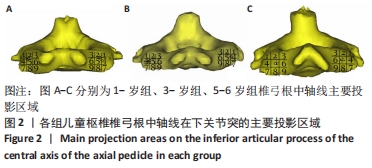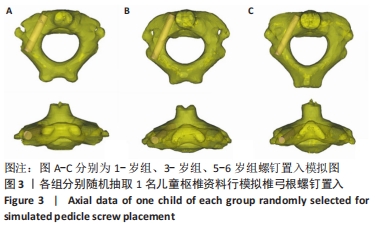[1] KUMAR KK, PARIKH B, JABARKHEEL R, et al. Fluoroscopic versus CT-guided cortical bone trajectory pedicle screw fixation: Comparing trajectory related complications. J Clin Neurosci. 2021;89:354-359.
[2] MASATO T, VENKATESH K, SUMEET S, et al. Comparative evaluation of screw accuracy and complications of new C-arm free O-arm navigated minimally invasive cervical pedicle screw fixation (MICEPS) with conventional cervical screw fixation. Interdisciplinary Neurosurgery: Advanced Techniques and Case Management. 2021;25.
[3] 彭宇杰,章彩珍,徐顶立,等.上颈椎前侧手术入路和内固定技术研究进展[J].脊柱外科杂志,2021,19(3):208-212.
[4] GAINES RW JR. The use of pedicle-screw internal fixation for the operative treatment of spinal disorders. J Bone Joint Surg Am. 2000;82(10):1458-1476.
[5] NI B, ZHAO W, GUO Q, et al. Comparison of Outcomes Between C1-C2 Screw-Hook Fixation and C1-C2 Screw-Rod Fixation for Treating Reducible Atlantoaxial Dislocation. Spine (Phila Pa 1976). 2017;42(20):1587-1593.
[6] RYU JI, BAK KH, KIM JM, et al. Comparison of Transarticular Screw Fixation and C1 Lateral Mass-C2 Pedicle Screw Fixation in Patients with Rheumatoid Arthritis with Atlantoaxial Instability. World Neurosurg. 2017;99:179-185.
[7] REYNOLDS JA, MACDONALD JD. Direct C2 Pedicle Screw Fixation for Axis Body Fracture. World Neurosurg. 2016;93:279-285.
[8] XIE W, GAO P, JI L. Three-dimensional spiral CT measurement of atlantal pedicle and its clinical application. Exp Ther Med. 2017;14(2):1467-1474.
[9] LIU JM, JIANG J, LIU ZL, et al. A New Entrance Technique for C2 Pedicle Screw Placement and the Use in Patients With Atlantoaxial Instability. Clin Spine Surg. 2017;30(5):E573-E577.
[10] HLUBEK RJ, BOHL MA, COLE TS, et al. Safety and accuracy of freehand versus navigated C2 pars or pedicle screw placement. Spine J. 2018;18(8):1374-1381.
[11] GECK MJ, TRUUMEES E, HAWTHORNE D, et al. Feasibility of rigid upper cervical instrumentation in children: tomographic analysis of children aged 2-6. J Spinal Disord Tech. 2014;27(3):E110-117.
[12] 郑吉波,张红侠,刘立峰,等.3D打印技术在颈椎后路寰枢椎椎弓根置钉中的对比分析研究[J].现代生物医学进展,2019,19(16):3085-3088,3093.
[13] ROBINSON LC, ANDERSON RCE, BROCKMEYER DL, et al. Comparison of Fusion Rates Based on Graft Material Following Occipitocervical and Atlantoaxial Arthrodesis in Adults and Children. Oper Neurosurg (Hagerstown). 2018;15(5):530-537.
[14] SUK SI, KIM WJ, LEE SM, et al. Thoracic pedicle screw fixation in spinal deformities: are they really safe? Spine (Phila Pa 1976). 2001;26(18):2049-2057.
[15] TAUCHI R, IMAGAMA S, ITO Z, et al. Complications and outcomes of posterior fusion in children with atlantoaxial instability. Eur Spine J. 2012; 21(7):1346-1352.
[16] ADIB O, BERTHIER E, LOISEL D, et al. Pediatric cervical spine in emergency: radiographic features of normal anatomy, variants and pitfalls. Skeletal Radiol. 2016;45(12):1607-1617.
[17] JOHNSTON TL, KARAIKOVIC EE, LAUTENSCHLAGER EP, et al. Cervical pedicle screws vs. lateral mass screws: uniplanar fatigue analysis and residual pullout strengths. Spine J. 2006;6(6):667-672.
[18] ITO Z, HIGASHINO K, KATO S, et al. Pedicle screws can be 4 times stronger than lateral mass screws for insertion in the midcervical spine: a biomechanical study on strength of fixation. J Spinal Disord Tech. 2014; 27(2):80-85.
[19] KOO KH, YOON ST, KIM SB, et al. The effect of hubbing on the pull-out strength of lateral mass screws in the cervical spine: a biomechanical experiment. J Spinal Disord Tech. 2015;28(1):E45-48.
[20] YARBROUGH BE, HENDEY GW. Hangman’s fracture resulting from improper seat belt use. South Med J. 1990;83(7):843-845.
[21] LIU J, NAPOLITANO JT, EBRAHEIM NA. Systematic review of cervical pedicle dimensions and projections. Spine (Phila Pa 1976). 2010;35(24):E1373-1380.
[22] 陈德元,刘永恒,黄福立.椎弓根钉棒系统内固定结合自体髂骨植骨治疗青年腰椎峡部裂[J].中国骨与关节损伤杂志,2021,36(5):491-493.
[23] AOUDE AA, FORTIN M, FIGUEIREDO R, et al. Methods to determine pedicle screw placement accuracy in spine surgery: a systematic review. Eur Spine J. 2015;24(5):990-1004.
[24] RINELLA A, CAHILL P, GHANAYEM A. Thoracic pedicle expansion after pedicle screw placement in a pediatric cadaveric spine: a biomechanical analysis. Paper presented at: the SRS 39th Annual Meeting, Buenos Aires, Argentina, 2004.
[25] BRANTLEY AG, MAYFIELD JK, KOENEMAN JB, et al. The effects of pedicle screw fit. An in vitro study. Spine (Phila Pa 1976). 1994;19(15):1752-1758.
[26] SEITZ JM,LUCAS A,KIRSCHNE M. Magnesium-based compression screws: A novelty in the clinical use of implants. JOM. 2016; 68(4):1177-1182.
[27] 周建国,段永壮.3D打印导向器椎弓根螺钉固定寰枢椎骨折脱位[J].中国矫形外科杂志,2021,29(12):1087-1090.
[28] CAO L, YANG E, XU J, et al. “Direct vision” operation of posterior atlantoaxial transpedicular screw fixation for unstable atlantoaxial fractures: A retrospective study. Medicine (Baltimore). 2017;96(25):e7054.
[29] LEE CK, TAN TS, CHAN CYW, et al. Surgical Morphometry of C1 and C2 Vertebrae: A Three-Dimensional Computed Tomography Analysis of 180 Chinese, Indian, and Malay Patients. Asian Spine J. 2017;11(2):181-189.
|





